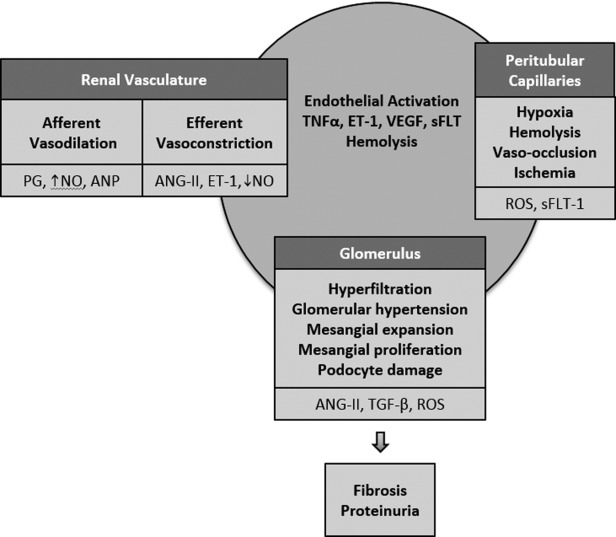Figure 1.

Proposed mechanisms of glomerulopathy in sickle cell disease. Multiple mechanisms may contribute to the pathogenesis of glomerular damage in sickle cell disease. These may occur due to changes in the renal vasculature, peritubular capillaries and the glomerulus. PG: prostaglandins; NO: nitric oxide; ANP: atrial natriuretic peptide; ROS: reactive oxygen species; sFLT-1: soluble fms-like tyrosine kinase-1; VEGF: vascular endothelial growth factor; ANG-II: angiotensin II; TGF-β: transforming growth factor-β; TNFα: tumor necrosis factor-α; ET-1: endothelin-1.
